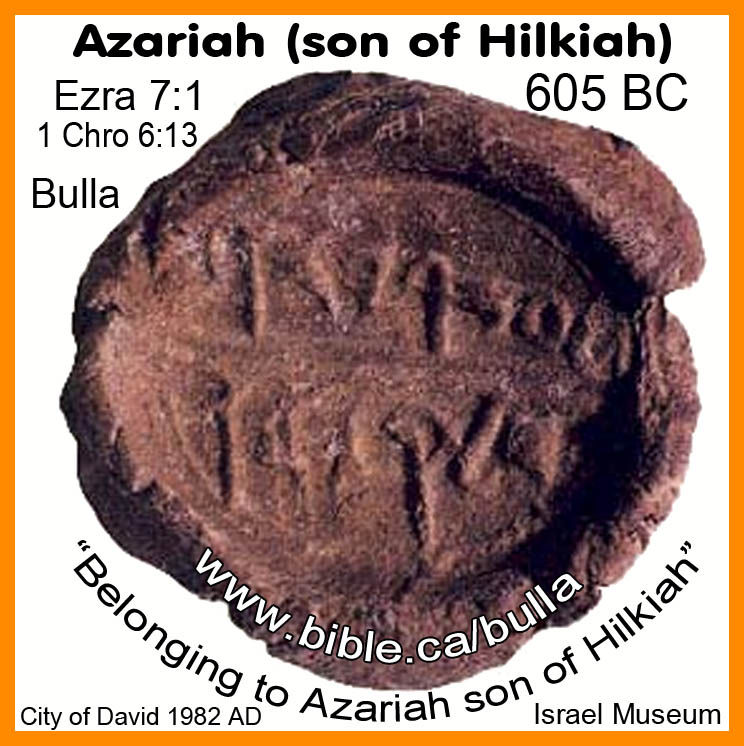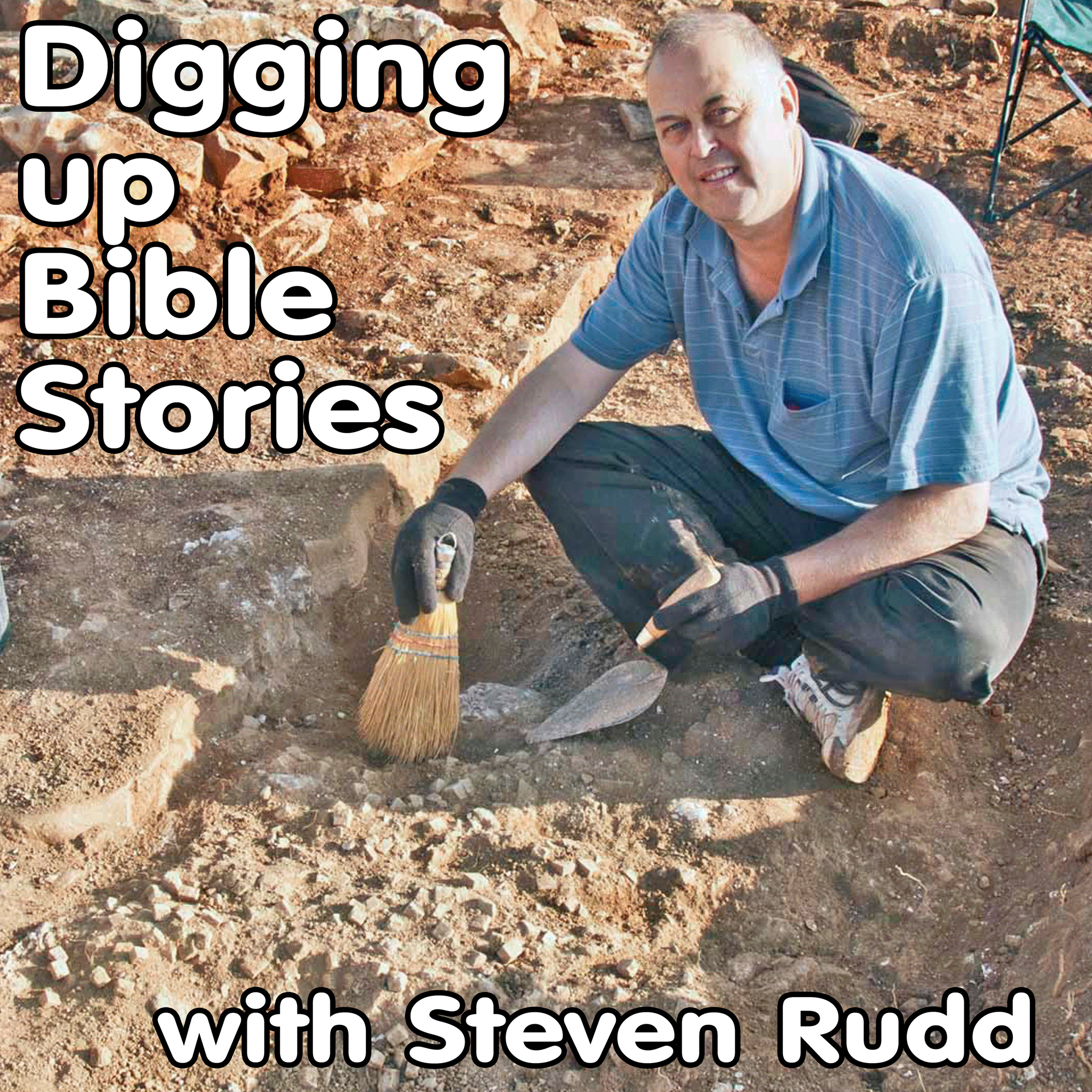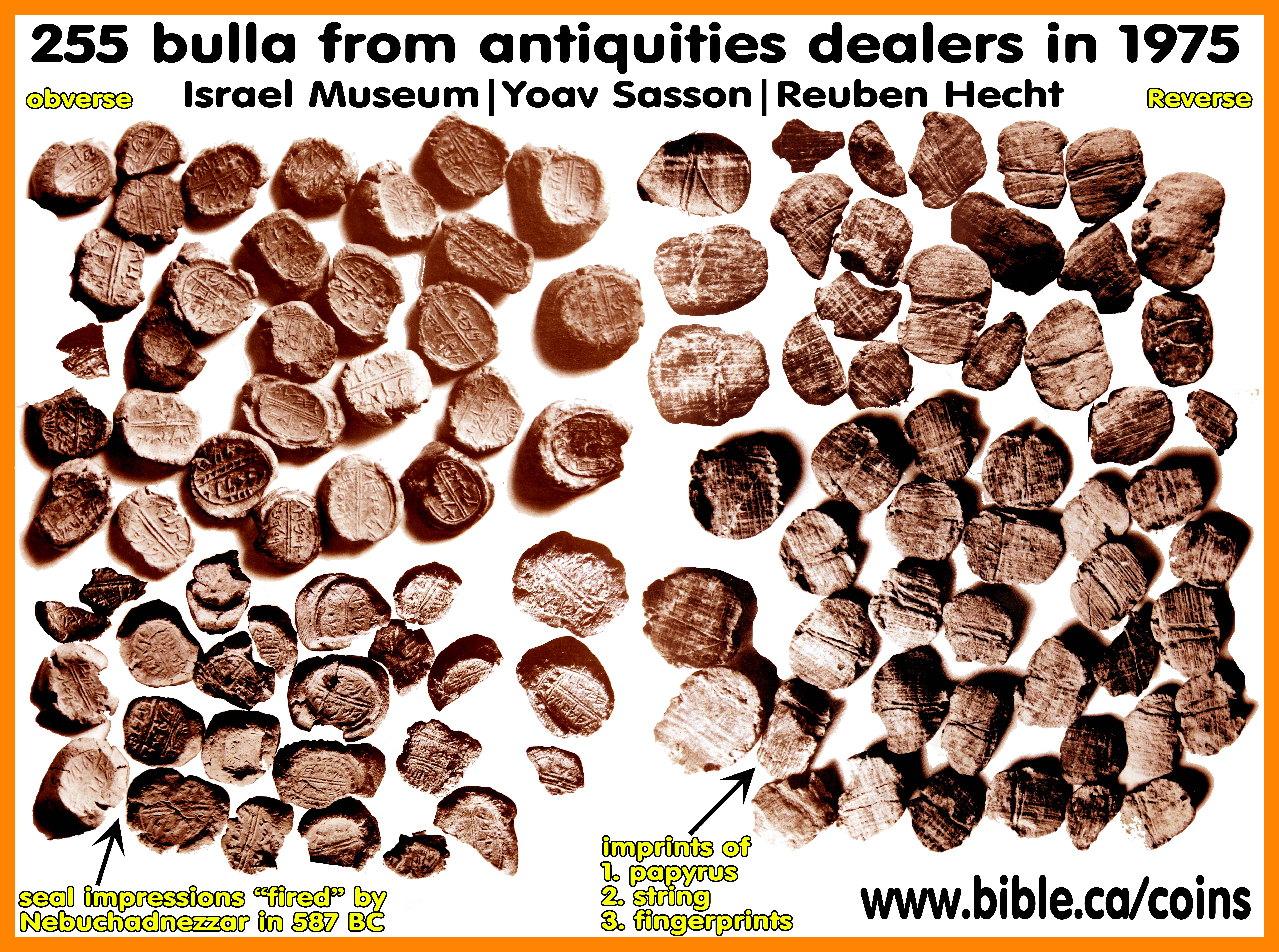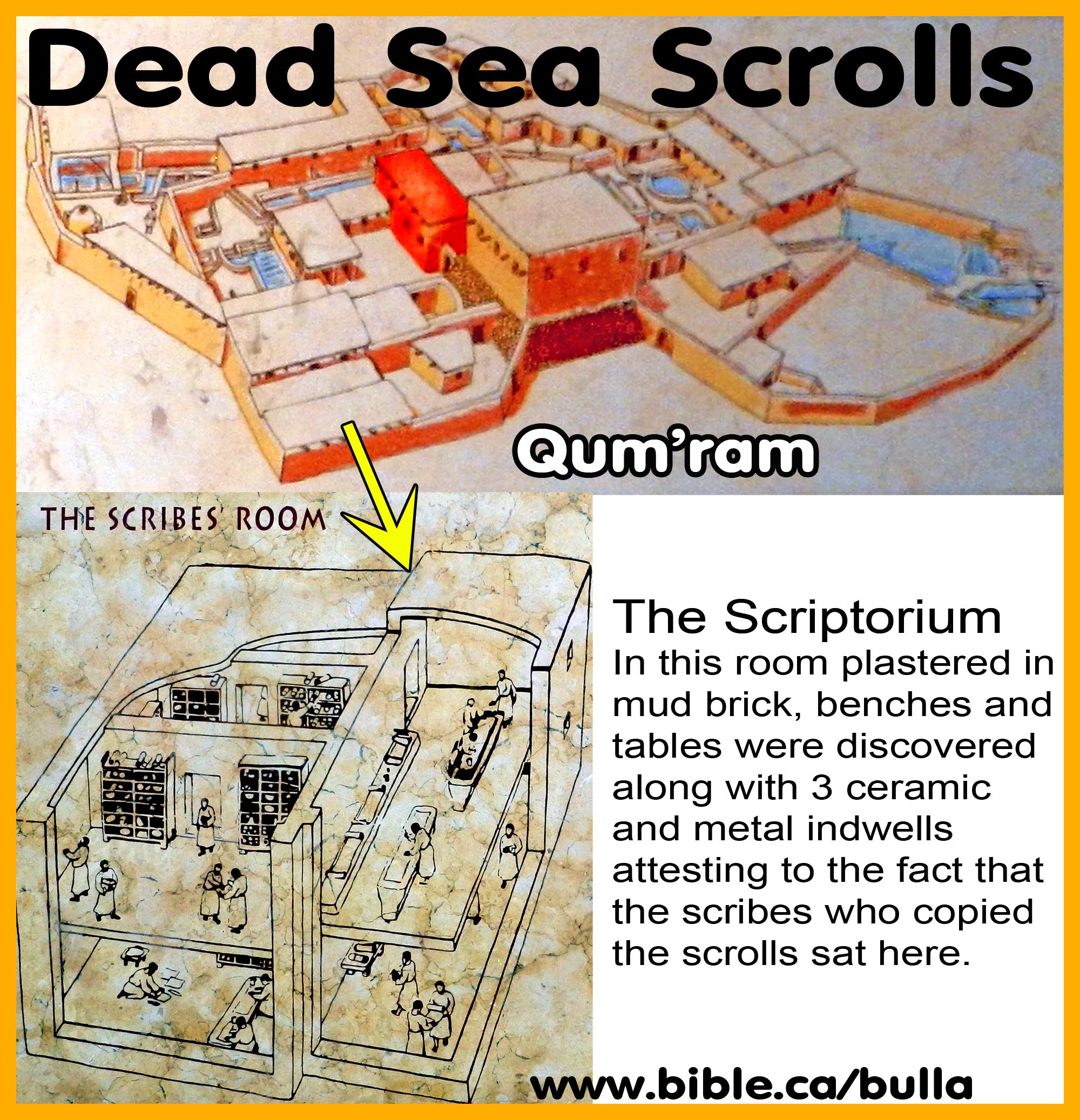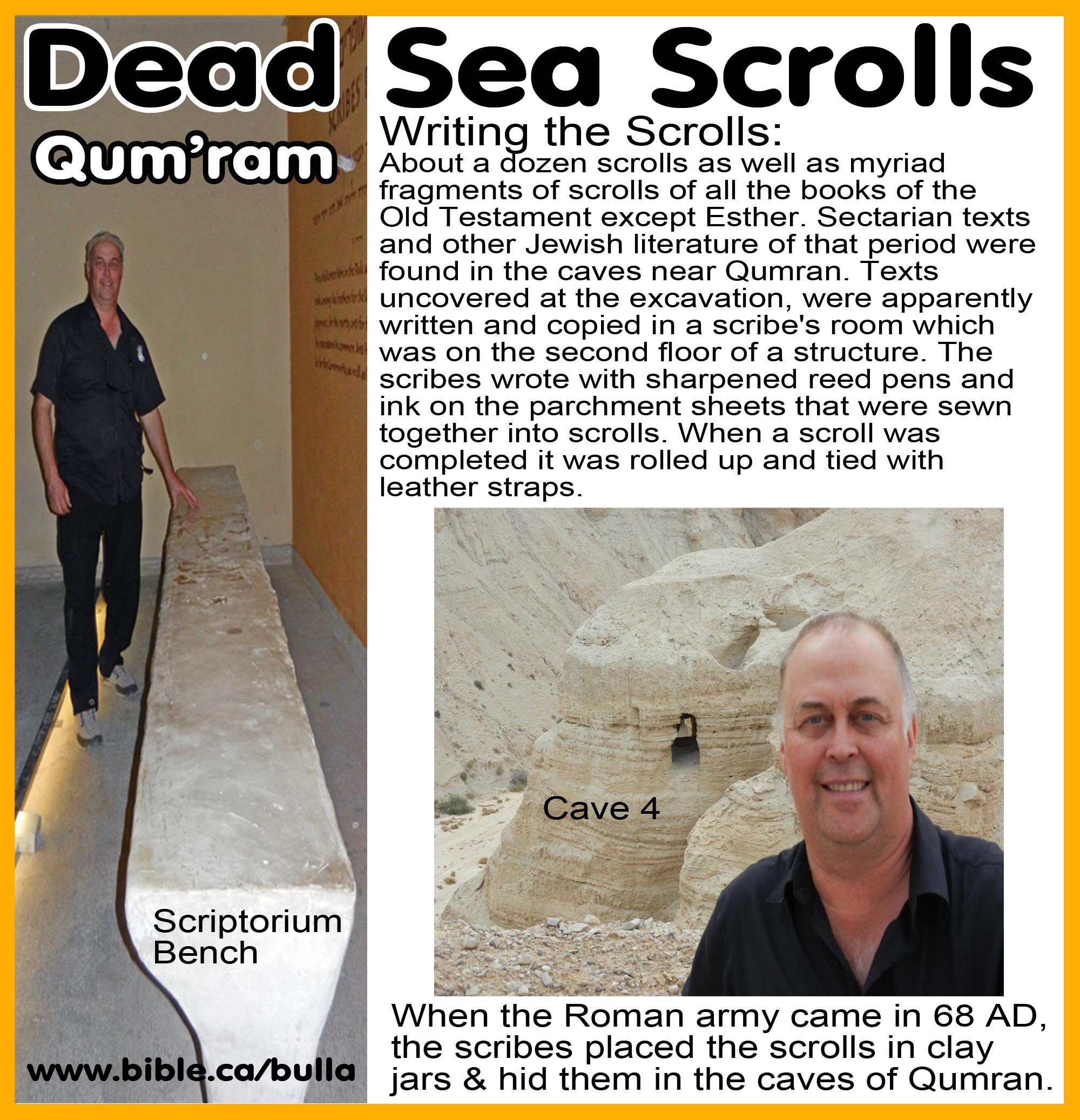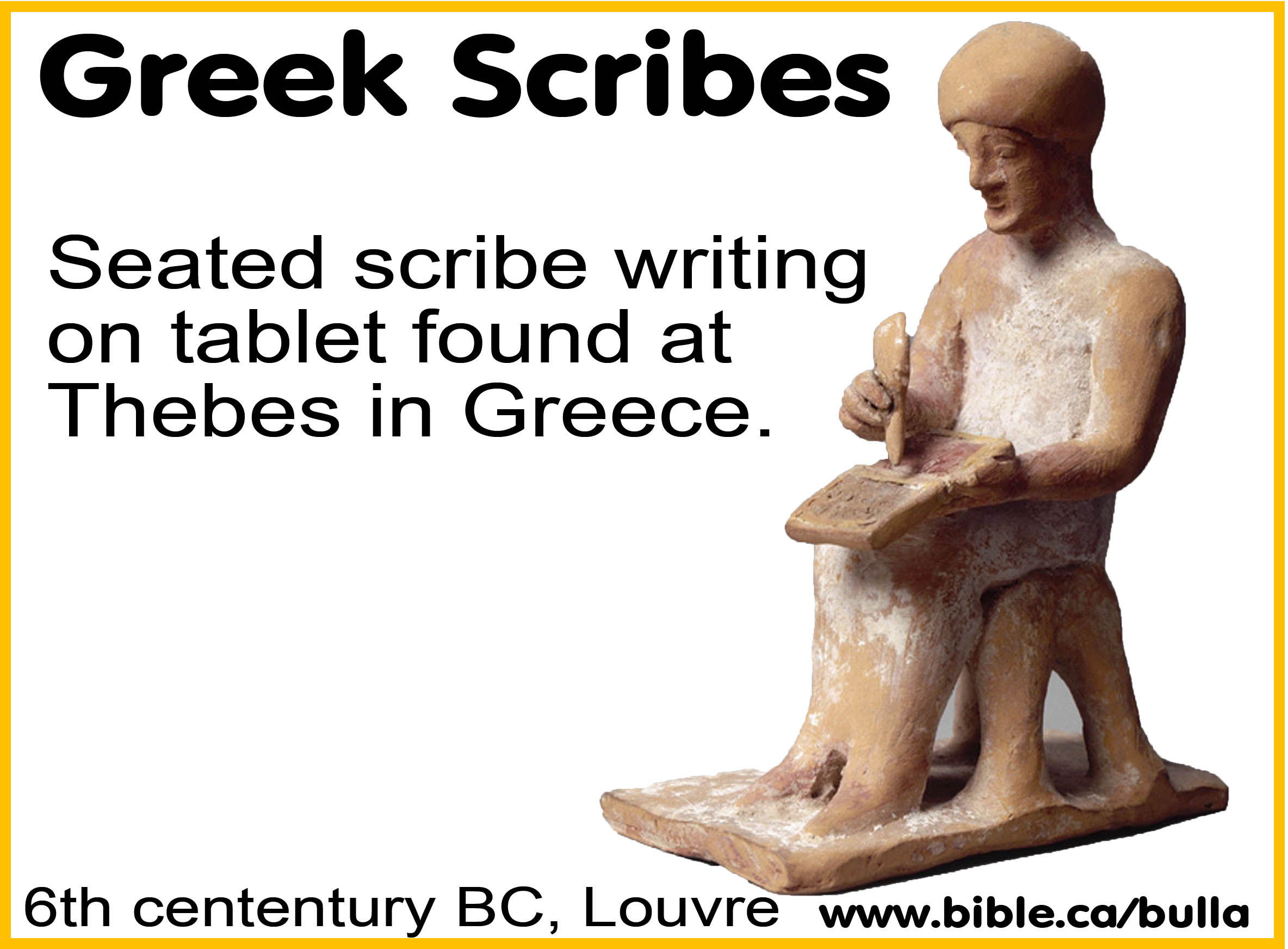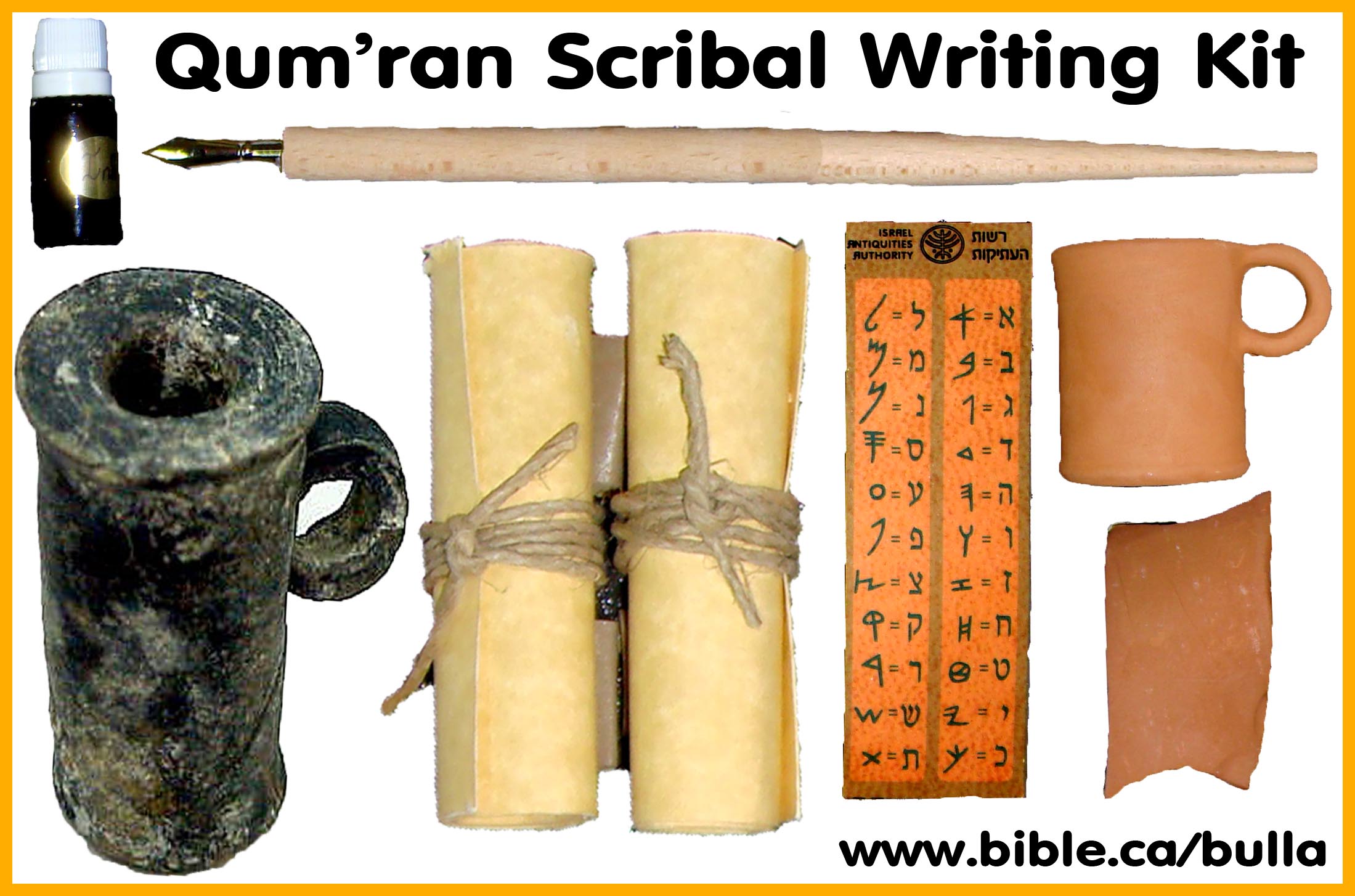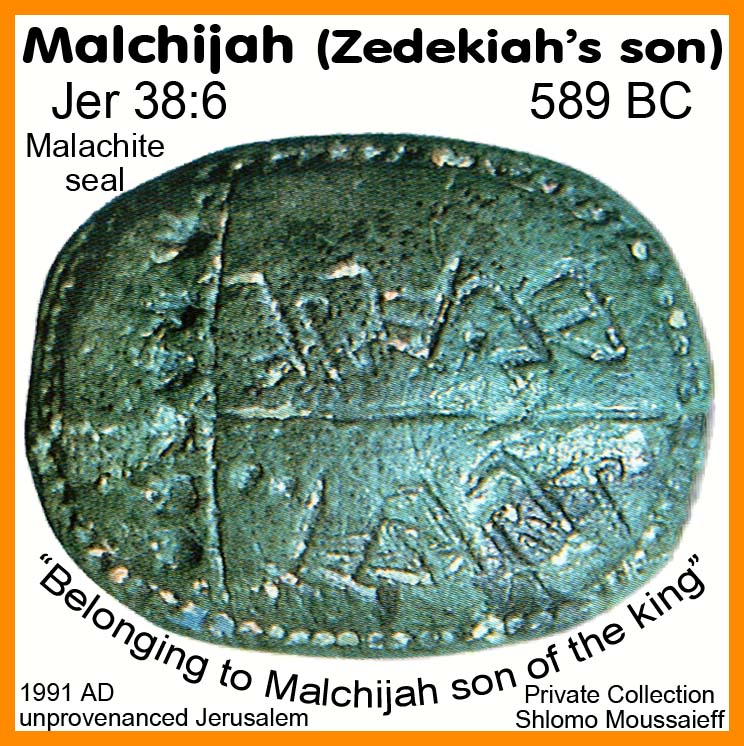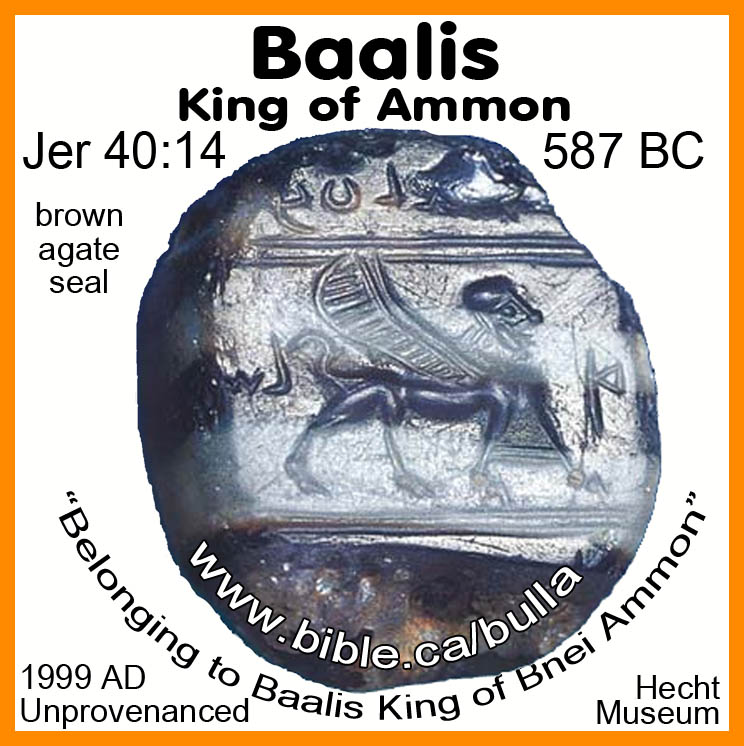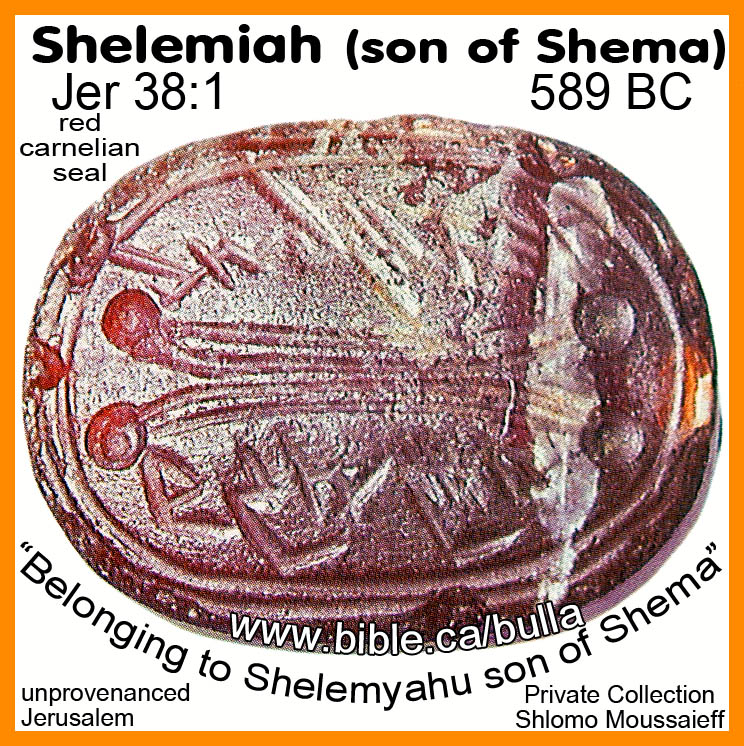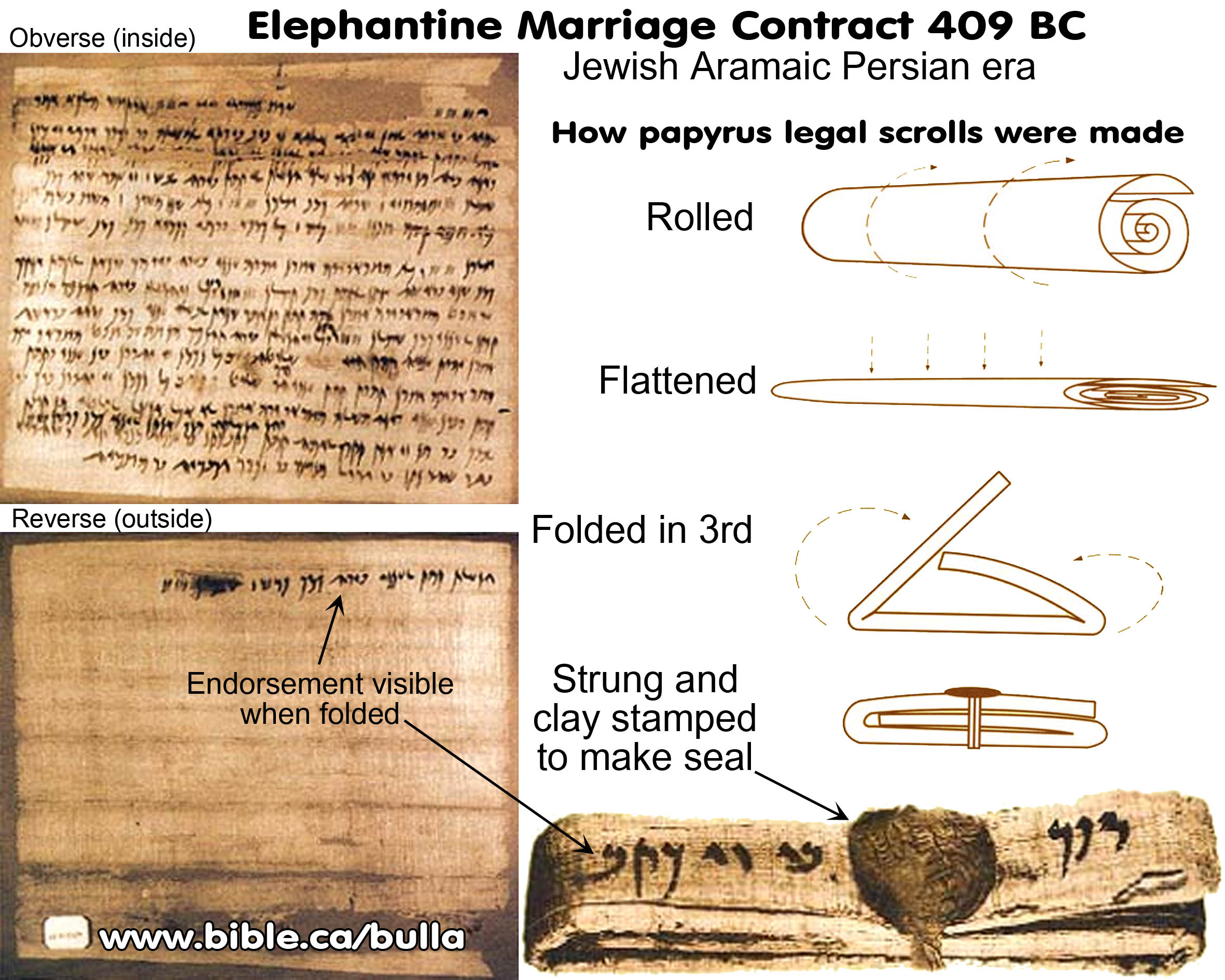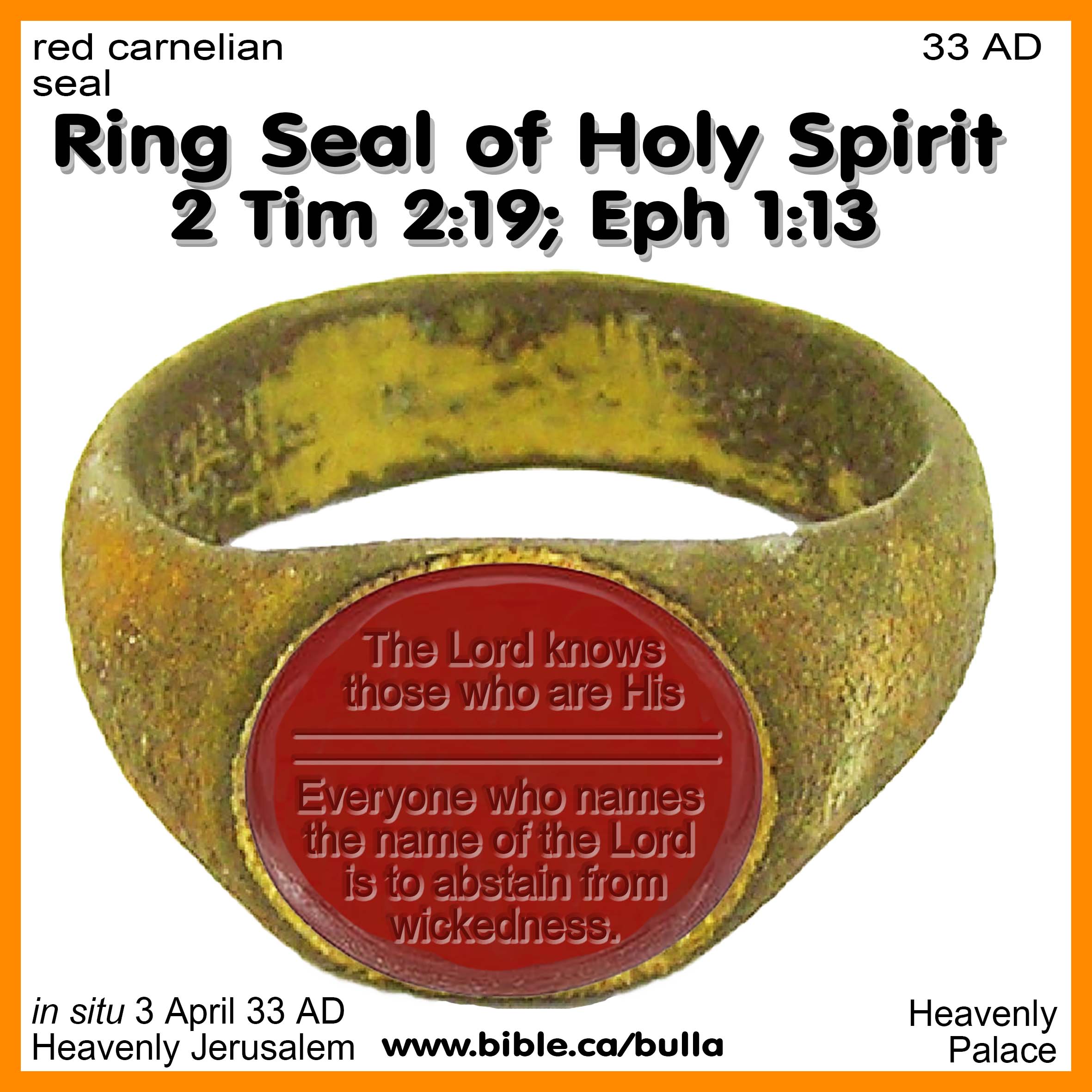How
to make secure Bible documents, seals and clay Bulla
Creation of ancient legal documents and the how bullae are made to
seal papyrus paper
|
|
||||||
|
Encyclopedia of Bullae and Seals: FREE! The Exhibit: On-line Museum of Bulla and seals Security: Creation of ancient legal documents and the how bullae are made to seal papyrus paper. Antitype: Pottery, seals, bulla and anti-typical New Testament imagery. Forgeries: Known fake bullae and seals |
||||||
|
|
||||||
|
Archaeologists are digging up bible stories!!! |
||||||
|
Archaeology is an important science that confirms the historical accuracy of the Bible. Since the Bible refers to hundreds of cities, kings, and places, we would expect to find evidence from on-site excavations. And this is exactly what we have found. The Bible is the most historically accurate book of history on earth. Read the Bible daily! |
|
|||||
|
|
||||||
Introduction:
1. Bible Bulla are dried clay lumps into which a carved stone seal was pressed creating a logo impression with text into the clay.
a. Seals were sometimes made of stone, metal or pottery.
b. They hung on strings, were made into rings or kept in storage for use on a shelf or table.
2. Bible
bullae were made by taking a that string was tied and knotted around the legal
document which was first rolled, then flattened, then folded onto itself, then
tied with a string and knotted. On this first knot, a rectangular layer of clay
is placed over it on top of the document. Then the string is tied around the
first lump of clay and then a second knot ties the clay to the document, over
which a second layer of clay is pressed. The two layers are molded by fingers
to prepare the surface for the seal is impression.

a. "A bulla is formed by impressing a seal on a small lump of clay attached to a written document; thus, it inherently contains somewhat more information than the seal itself." (Hebrew Bullae from the time of Jeremiah: Remnants of a burnt archive, Nahman Avigad, p11, 1986 AD)
b. "The bullae are small lumps or pieces of clay, originally attached to a string or cord which had been wound and tied around a rolled or folded papyrus scroll. The upper surface of the bullae shows the seal impressions, while on the back, impressed marks of the papyrus fibres and of the string can be discerned. Generally, the bullae are of a fine, levigated clay." (Hebrew Bullae from the time of Jeremiah: Remnants of a burnt archive, Nahman Avigad, p14, 1986 AD)
c. "The assemblage [255 bulla, 1975 AD] clearly originates from the site of a conflagration. Though this fire destroyed the papyrus documents which had been sealed with the bullae, it baked the clay bullae themselves, making them durable. Uneven firing led to variations in the colour of the bullae, from reddish-brown through yellowish and, mainly, grey and black. Sometimes the clay was greatly overfired, making it fragile and friable." (Hebrew Bullae from the time of Jeremiah: Remnants of a burnt archive, Nahman Avigad, p14, 1986 AD)
d. The use of papyrus scrolls, and their sealing with bullae of clay, certainly derived from Egypt, the homeland of papyrus. (Hebrew Bullae from the time of Jeremiah: Remnants of a burnt archive, Nahman Avigad, p121, 1986 AD)
3. The document with the unfired clay bulla was then placed in storage rooms.
a. When these documents and clay seals are buried, they are completely destroyed.
b. The papyrus or vellum rots and the clay absorbs moisture and is squashed into dirt. Nothing is left.
4. Fire turns fragile clay bullae into indestructible pottery!
a. Fire burns the documents and strings but the clay bulla are "fired" and therefore transformed from clay into pottery in exactly the same way a potter puts his dried clay creations into a kiln.
b. Archeologically we have found many authentic clay seals from the period of the Babylonian captivity and the burning of Jerusalem in 587 BC by Nebuchadnezzar. So thanks to Nebuchadnezzar, we have discovered the royal archive of documents and clay seals now transformed into hard pottery.
c. Nebuchadnezzar destroyed the entire city with fire and if he had not, most of the archeological information found in this outline regarding Josiah would have been lost forever. We need to thank Nebuchadnezzar for burning Jerusalem, because the fire turned the simple dried clay into hard fired "pottery". Otherwise the clay, when buried, simple disintegrates.
d. In
rare cases, unfired clay bulla have been excavated in dry caves stored inside
pottery jars. A seven sealed document along with 128 Bulla dating to 333 BC
were discovered in a cave in Wadi Daliyeh which is north of Jericho in 1962 AD.

5. The
recent archeological digs in the city of David in Jerusalem have excavated
hundreds of these bulla that date to the Babylonian captivity and the time of
Jeremiah:
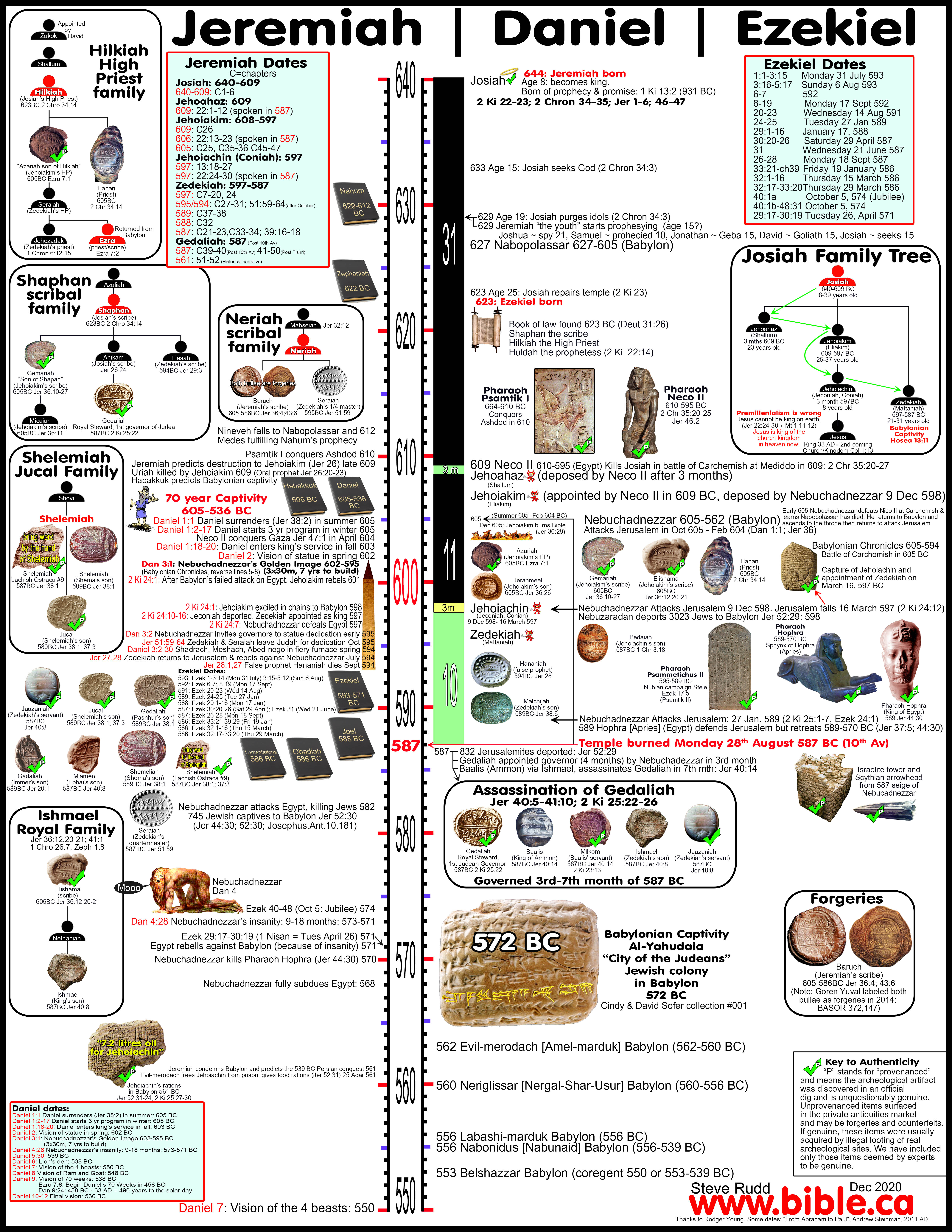
I. How ancient legal documents were made on papyrus or vellum:
A. Legal documents in the Bible required all of the following:
- Document: papyrus or vellum (animal skin)
- A scribe who writes the words of the agreement onto the document and acts as an officiate like a modern lawyer or a bonded justice of the peace or a court recorder.
- String to tied up the completed document after it is rolled, flattened and folded in three.
- Two lumps of clay.
- The document is tied with a string and the first lump of clay is pressed onto the knot.
- A second knot in the string ties first clay lump onto the document.
- Then a second lump of clay is pressed over the a second knot and formed into a circular lump.
- A Seal is pressed into the formed clay and the document is put into the scribes secure document storage room for safe keeping.
- "So they went to the king in the court, but they had deposited the scroll in the chamber of Elishama the scribe, and they reported all the words to the king." (Jeremiah 36:20)
- An unsealed "unofficial" duplicate document is made available for anyone to read the contents of the sealed document without breaking the seal.
- " I bought the field which was at Anathoth from Hanamel my uncle’s son, and I weighed out the silver for him, seventeen shekels of silver. I signed and sealed the deed, and called in witnesses, and weighed out the silver on the scales. “Then I took the deeds of purchase, both the sealed copy containing the terms and conditions and the open copy; and I gave the deed of purchase to Baruch the son of Neriah, the son of Mahseiah, in the sight of Hanamel my uncle’s son and in the sight of the witnesses who signed the deed of purchase, before all the Jews who were sitting in the court of the guard." (Jeremiah 32:9-12)
- Jeremiah's deed of purchase [sepher hammicinah] was written out in two complete copies on two separate papyrus sheets written by Baruch, Jeremiah's scribe! One was the official, legal "sealed deed" only opened if a dispute arose and the other was a "certified duplicate copy" any one could view in the storerooms. Both copies were given by Jeremiah to Baruch the scribe who placed them in a pottery storage jar with a water resistant ceramic lid, so "they will last a long time". When Nebuchadnezzar burnt the palace in 587 BC, Jeremiah's deed was likely among them. The fire destroyed the papyrus deed and "fired" Baruch's bulla that was attached to it. The bulla of was found in the same batch at the bulla as was Baruch (Berekhyahu) the scribe. We may be looking at the actual bulla from Baruch's seal that was used on Jeremiah's deed from Jeremiah 32:9-15! Certainly these are authentic!
- If anyone challenges the duplicate, the seal is broken on the "official" document to settle all disputes. The "official" document would then be resealed and put back into storage.
- Scriptoriums and "scribe's chambers" is where legal documents were made and stored:
- Scribe's chambers are mentioned at the time of Jeremiah.
- At Qum'ran, the Essenes produced many written documents in their "Scriptorium" which has been excavated. When the Roman army came in 68 AD, the scribes placed the scrolls in clay jars & hid them in the caves of Qumran. Cave 4 is where the famous Isaiah scroll was found!
|
The Scriptorium of Qum'ran In this room plastered in mud brick, benches and tables were discovered along with 3 ceramic and metal indwells attesting to the fact that the scribes who copied the scrolls sat here.
|
|
|
Writing the Dead Sea Scrolls: About a dozen scrolls as well as myriad fragments of scrolls of all the books of the Old Testament except Esther. Sectarian texts and other Jewish literature of that period were found in the caves near Qumran. Texts uncovered at the excavation, were apparently written and copied in a scribe's room which was on the second floor of a structure. The scribes wrote with sharpened reed pens and ink on the parchment sheets that were sewn together into scrolls. When a scroll was completed it was rolled up and tied with leather straps. |
|
II. Scribes: |
Here is a sculpture in the Louvre of a seated Greek scribe from the 6th century BC found at Thebes in Greece. He is holding a writing instrument and parchment. |
- Scribes have existed from the time of Noah down to the time of Jesus.
- A scribe was a language expert, fluent in reading and writing the native language.
- While Moses required all Jews to learn to read and write in the command to teach their children the words of the law, not all were literate.
- Scribes were important positions in government and the legal system.
- Scribes recorded the inspired words of the Bible:
- "Then Jeremiah took another scroll and gave it to Baruch the son of Neriah, the scribe, and he wrote on it at the dictation of Jeremiah all the words of the book which Jehoiakim king of Judah had burned in the fire; and many similar words were added to them." (Jeremiah 36:32)
- Scribes were also leaders, teachers and experts of the religious law of Moses:
- "Ezra the scribe stood at a wooden podium which they had made for the purpose. … Ezra opened the book in the sight of all the people for he was standing above all the people; and when he opened it, all the people stood up." (Nehemiah 8:4-5)
- Herod ordered "Gathering together all the chief priests and scribes of the people, he inquired of them where the Messiah was to be born." (Matthew 2:4)
- "And His disciples asked Him, “Why then do the scribes say that Elijah must come first?”" (Matthew 17:10)
- “The scribes and the Pharisees have seated themselves in the chair of Moses; therefore all that they tell you, do and observe, but do not do according to their deeds; for they say things and do not do them." (Matthew 23:2–3)
- As legal experts Scribes at Jesus time loved to offer all possible legal interpretations and let the people decide which was correct. In contrast, Jesus gave definitive, black and white directives on doctrine and moral issues. Scribes taught like modern lawyers but Jesus taught like the judge:
- "When Jesus had finished these words, the crowds were amazed at His teaching; for He was teaching them as one having authority, and not as their scribes." (Matthew 7:28–29)
- Scribes were like lawyers or bonded justice's of the peace trusted, oath-bound public officials recorded official information like court stenographers whose written documents were considered trustworthy and authentic:
- Officiates like a modern lawyers or a bonded justice of the peace or a court recorder.
- "Jehoshaphat the son of Ahilud was the recorder;" (1 Kings 4:3)
- "When they saw that there was much money in the chest, the king’s scribe and the high priest came up and tied it in bags and counted the money which was found in the house of the Lord." (2 Kings 12:10)
- "Joah the son of Asaph the recorder" (2 Kings 18:18)
- "Shimshai the scribe wrote a letter against Jerusalem to King Artaxerxes" (Ezra 4:8–9)
- "Then the king’s scribes were summoned and it was written just as Haman commanded to the king’s satraps, to the governors who were over each province and to the princes of each people, each province according to its script, each people according to its language, being written in the name of King Ahasuerus and sealed with the king’s signet ring." (Esther 3:12)
- Scribes were trusted stewards of documents, money and assets who could also violate their "oath of office through corruption":
- "“How can you say, ‘We are wise, And the law of the Lord is with us’? But behold, the lying pen of the scribes Has made it into a lie." (Jeremiah 8:8)
- "“Woe to you, scribes and Pharisees, hypocrites, because you travel around on sea and land to make one proselyte; and when he becomes one, you make him twice as much a son of hell as yourselves." (Matthew 23:15)
- “Woe to you, scribes and Pharisees, hypocrites! For you tithe mint and dill and cummin, and have neglected the weightier provisions of the law: justice and mercy and faithfulness; but these are the things you should have done without neglecting the others." (Matthew 23:23)
- SCRIBAL KIT or Writing Case: Scribe carried around a "scribe Kit" that had papyrus or bamboo quill pens, various colours of ink, a blotting surface and parchment.
- "Then the glory of the God of Israel went up from the cherub on which it had been, to the threshold of the temple. And He called to the man clothed in linen at whose loins was the writing case." (Ezekiel 9:3,11)
- "On his hips he carried a scribe’s kit (qeset hassōpēr). qeset is a loanword from Egyp. gsty, which designated a palette with a slot for the pen and hollowed out containers for ink, usually two, for red and black ink, respectively." (NICOT, Ezekiel 9:1–2, 1997 AD)
- "scribe’s kit. “A palette with a slot in which the pens were kept, and hollowed places in which the ink was put, generally two—for black and red ink … the Hebrew word [qeset] was an Egyptian loan word gst(y) ‘writing outfit’ ” (G. R. Driver, Semitic Writing, rev. ed. [London: Oxford University Press, 1954], p. 86, pl. 31.1). An Egyptian scribe with his kit tucked into his waistband is portrayed in Views of the Biblical World [Hebrew], ed. B. Mazar" (AYBC, Ezekiel 9:2, 2008 AD)
- "The instrument of a scribe (which is denoted by an Egyptian loanword [note f]), which hangs from his girdle, further identifies the figure as a scribe. In early Egypt the scribe’s instrument consisted of a palette with two small containers for black and red ink, a small container for rushes, and a bowl with water. From the Middle Kingdom the container for rushes was fitted to the square, board-like wooden palette itself. In Babylonia the stylus (qan ṭuppi—stylus for the [clay] tablet) was usually carried in a leather case “in the bands of the hips.” In the divine world Nebo was particularly known as the scribe deity. His stylus may be illustrated among the emblems of the gods on boundary stones. Since Nebo is identified on the stele of Adadnirari II as “he who holds the scribe’s stylus,” Gunkel “Schreiberengel,” believed he could find in the god Nebo, in the group of the seven planet deities, the immediate prototype for Ezek 9f. The clear connection of priestly features with those of the office of scribe, a consideration of the technique of a scribe in which the painting of a sign on the forehead with a reed is more conceivable than the impressing of the scribe’s stylus associated with Nebo, as well as the Egyptian derivation of the designation for a scribe’s instrument, lead us to think of the possibility of an Egyptian origin. This Egyptian origin would have come to Jerusalem via Canaanite tradition. The task of this figure of marking those who were to be spared the judgement with a sign was undoubtedly given by earlier Israelite tradition. Marking a person first of all identified him as the property of another (Ex 21:6*). Daube raises the question whether or not the law of asylum, which in Palestine may have been influenced from Egypt, was familiar with such marks of possession placed on men by the gods or their representatives. Herodotus II:13 mentions a temple in Egypt in which the slave who fled there for protection was marked with the στίγματα ἱερά, and so became untouchable. The Cain narrative, which mentions in Gen 4:15* the putting of a mark (שׂים אות) on Cain and thereby offers an aetiology of the tribal mark of the Kenites, shows a clear knowledge of the protective character of such divine marks of possession. The sign which also seems to have been worn by the prophets was put, according to 1 Kings 20:38*, 41* על עינים, and according to Zech 13:6* בין ידים. We may also question whether there were not, in the priestly atonement ritual in Israel, occurrences of such “marking” of someone to whom Yahweh had shown mercy, analogous to the mouth-cleansing rite which must lie behind Is 6:6f." (Hermeneia, Ezekiel 9:2, 1979 AD)
|
Scribes in Egypt 1. Scribe’s palette with sharpened reed pens. The circular hollow (left) held ink. Inscription on wood: “Ahmose I”. 18th Dynasty, 1557-1532 BC (Ahmoses I expelled Hyksos) 1. An Egyptian scribe registering Nubian tribute including ostrich eggs and feathers, a monkey, gold, and ebony. Wall painting tomb of Rekhamire at Thebes: 1475–1448 BC 2. Egyptian Scribe's palette 1000 B.C. Thebes 3. Egyptian scribe with papyrus roll 5th Dynasty, Saqqara |
- Scribes, high priests and kings were familial and dynastic
positions passed from father to son. For example, during the time of
Jeremiah the Shaphan and Neriah families were the scribes of the day:

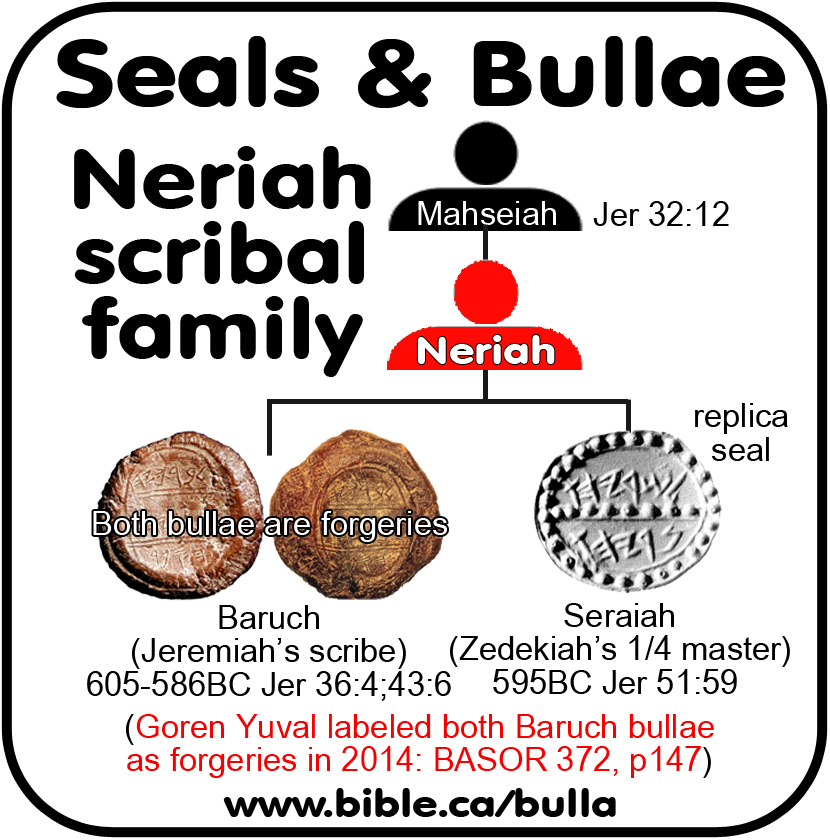
- Scribes were instrumental in the crucifixion of Christ:
- "Now the Passover and Unleavened Bread were two days away; and the chief priests and the scribes were seeking how to seize Him by stealth and kill Him;" (Mark 14:1)
- Many scribes converted to Christianity and immediately filled the role we know today as "church minister" or "Sunday pulpit preacher" in the first century.
- "And Jesus said to them, “Therefore every scribe who has become a disciple of the kingdom of heaven is like a head of a household, who brings out of his treasure things new and old.”" (Matthew 13:52)
- Something old = expounding and teaching Christians all the things they understood and believed as Jews before their conversion to Jesus.
- Converted Scribes brought forth "Something new" = See the many hidden mysteries were existed in the Old Testament that were revealed in the New Testament. Scribes would immediately be able to "connect the dots" and make the application.
- "As to this salvation, the prophets who prophesied of the grace that would come to you made careful searches and inquiries, seeking to know what person or time the Spirit of Christ within them was indicating as He predicted the sufferings of Christ and the glories to follow. It was revealed to them that they were not serving themselves, but you, in these things which now have been announced to you through those who preached the gospel to you by the Holy Spirit sent from heaven—things into which angels long to look." (1 Peter 1:10–12)
- "Now to Him who is able to establish you according to my gospel and the preaching of Jesus Christ, according to the revelation of the mystery which has been kept secret for long ages past, but now is manifested, and by the Scriptures of the prophets, according to the commandment of the eternal God, has been made known to all the nations, leading to obedience of faith; to the only wise God, through Jesus Christ, be the glory forever. Amen." (Romans 16:25–27)
- "but we speak God’s wisdom in a mystery, the hidden wisdom which God predestined before the ages to our glory; the wisdom which none of the rulers of this age has understood; for if they had understood it they would not have crucified the Lord of glory;" (1 Corinthians 2:7–8)
- "that by revelation there was made known to me the mystery, as I wrote before in brief. By referring to this, when you read you can understand my insight into the mystery of Christ, which in other generations was not made known to the sons of men, as it has now been revealed to His holy apostles and prophets in the Spirit; to be specific, that the Gentiles are fellow heirs and fellow members of the body, and fellow partakers of the promise in Christ Jesus through the gospel, of which I was made a minister, according to the gift of God’s grace which was given to me according to the working of His power." (Ephesians 3:3–7)
- Converted Scribes brought forth "Something new" = connecting the hundreds of prophecies about Jesus I the Old Testament to His life, crucifixion, resurrection, kingdom and church.
- "For whatever was written in earlier times [Old Testament] was written for our instruction, so that through perseverance and the encouragement of the Scriptures we might have hope." (Romans 15:4)
- "For I delivered to you as of first importance what I also received, that Christ died for our sins according to the [Old Testament] Scriptures, and that He was buried, and that He was raised on the third day according to the [Old Testament] Scriptures," (1 Corinthians 15:3–4)
- "which God promised beforehand through His prophets in the holy Scriptures, concerning His Son, who was born of a descendant of David according to the flesh, who was declared the Son of God with power by the resurrection from the dead, according to the Spirit of holiness, Jesus Christ our Lord," (Romans 1:2–4)
- "Then Philip opened his mouth, and beginning from this Scripture (Isa 53) he preached Jesus to him." (Acts 8:35)
- "And according to Paul’s custom, he went to them, and for three Sabbaths reasoned with them from the Scriptures, explaining and giving evidence that the Christ had to suffer and rise again from the dead, and saying, “This Jesus whom I am proclaiming to you is the Christ.” And some of them were persuaded and joined Paul and Silas, along with a large number of the God-fearing Greeks and a number of the leading women. But the Jews, becoming jealous and taking along some wicked men from the market place, formed a mob and set the city in an uproar; and attacking the house of Jason, they were seeking to bring them out to the people." (Acts 17:2–5)
- "The brethren immediately sent Paul and Silas away by night to Berea, and when they arrived, they went into the synagogue of the Jews. Now these were more noble-minded than those in Thessalonica, for they received the word with great eagerness, examining the Scriptures daily to see whether these things were so." (Acts 17:10–11)
- "Now a Jew named Apollos, an Alexandrian by birth, an eloquent man, came to Ephesus; and he was mighty in the [Old Testament] Scriptures … and he began to speak out boldly in the synagogue. … he greatly helped those who had believed through grace, for he powerfully refuted the Jews in public, demonstrating by the Scriptures that Jesus was the Christ." (Acts 18:24-28)
C. How Seals were made:
1. A variety of precious stones were used in the manufacture of seals although they may also have been made from fired clay pottery or various metals.
2. A scribe would use bronze tools to carve out the seal image in "mirror reverse" so that when it was pressed into the clay, the seal was readable.
D. How to make Bible clay bulla:
1. Prepare your document:
a. The document to be sealed was rolled, flattened and folded into three sections as seen above.
b. The document was folded so that the endorsement was visible to indicate the contents without opening.
c. A string was tied around the document with a knot in the middle directly under the location of the clay seal.
2. Prepare two lumps of clay:
a. You begin with two similarly sized rectangular lumps of clay (about 3x4 cm)
b. Bible bullae are made from two different rectangular layers of clay placed on top of each other and pressed together to form a single lump.
c. The reason for this was to put the string knot that wrapped around the legal document in-between the two layers of clay making it impossible to access the knot deep inside the bullae.
d. "By using silty clay, which was often sealed when nearly “leather hard,” as evident from the cracks that many bullae have on their edges, clear impression could be achieved easily without the clay clinging to the seal. However, for this reason, the bulla could not be simply pasted over the papyrus and the cords, for which reason the two-layer method described above was required." (Goren, p155).
3. Lay the first lump of clay onto the knot that secures the document:
a. The clay seal was pressed onto the knot on top of the document so the knot was inside the clay.
b. This ensured that it was impossible to access the knot after the clay dried without breaking the seal.
4. Tie a second knot with the string ends around the first lump of clay in the top middle.
a. Two knots in the string were used instead of one because the whole point of a bulla was security!
b. You had to break the clay bullae to read the contents of the document because one of the knots was in the middle of the bullae.
5. The
second lump of clay was placed directly on top of the first lump of clay,
sandwiching the second knot in between the two rectangular lumps of clay.
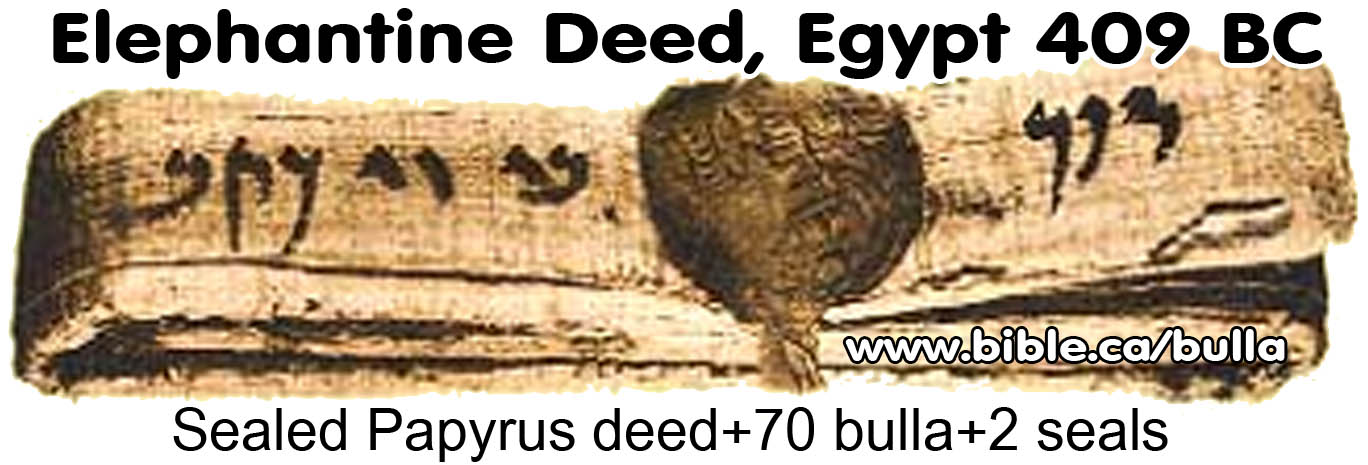
6. Now you form the two lumps of clay with our fingers keeping the knot in the middle preparing it for the seal impression.
7. Applying the seal image:
a. Seals were sometimes worn around the neck like a neckless.
b. The
seal is carved out of a precious stone and is often set into a ring on a finger
as seen here:

9. Finally the document was then placed in storage rooms where the clay would dry:
- "So they went to the king in the court, but they had deposited the scroll in the chamber of Elishama the scribe, and they reported all the words to the king." (Jeremiah 36:20)
- Here is the actual clay bulla of Elishama the scribe
found in the city of David in 1982 AD in a professional archeological dig
currently housed in the Israel Museum in Jerusalem. (It doesn't get any
better than that!!!):
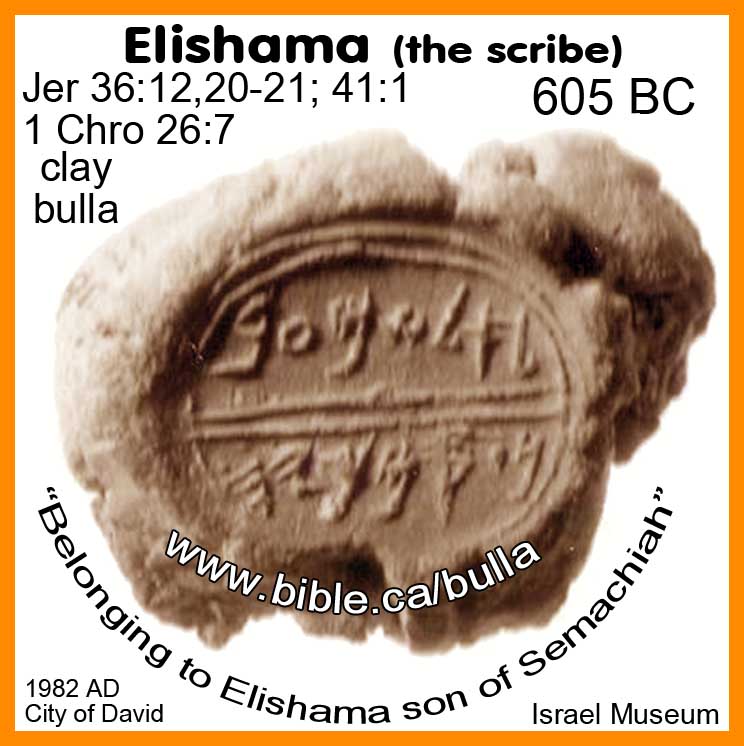
10. "In ancient times, seals were used to witness or sign documents. The seal was impressed on a lump of clay called a bulla (plural, bullae). Incised on the seal and impressed on the clay were usually the name of the seal’s owner, his father’s name (patronymic) and, occasionally, the title of the seal owner. Papyrus documents were closed by rolling them and tying them with a string. A lump of wet clay was then placed on the knot and stamped with the seal. If more than one witness attested to a document, the document was tied with several strings, each of which was sealed. After the clay dried, the papyrus was stored in an archive (see Jeremiah 32:10–14). When ancient cities were conquered, they were generally put to the torch. The intense heat would destroy most of the city, but the clay bullae would be fired like pottery, making them virtually indestructible. This “foresight” and “thoughtfulness” of the Assyrians, Babylonians and other ancient conquerors helped preserve the bullae that archaeologists are only now discovering. " (Six Biblical Signatures: Seals and seal impressions of six biblical personages recovered, Tsvi Schneider, BAR, 1991 AD)
11. WAX VS. CLAY: Although clay was the most common material for bulla, wax was sometimes used as a bulla and to coat the documents as a protective layer:
- "In the Samaria papyri, discovered in 1962 by
Tamireh bedouin north of Jericho (see “Bedouin Find Papyri Three
Centuries Older Than Dead Sea Scrolls,” BAR 04:01, by Paul Lapp), the
official documents, written during the second half of the fourth century
B.C. (350–300 B.C.), are in the Aramaic script and language, as we might
expect of legal-administrative texts. But the papyri were sealed with wax bullae or scalings with
inscriptions in the paleo-Hebrew script—the script most likely to be
known by local officials." (The Evolution of Two Hebrew Scripts,
Jonathan P. Siegel, BAR 05:03, 1979 AD)

b. Wax was used to coat documents to protect them: "The collection of thanksgiving songs came into Sukenik’s hands in three separate sheets of parchment comprising twelve columns of writing. The sheets were crushed together into a bundle of fragments and were in a very poor state of preservation. No small part of the writing was covered by a layer of black wax which was used to seal the documents for storage. Thus the deciphering of many parts of the damaged columns required considerable ingenuity." (The Scroll of the War Between the Children of Light and the Children of Darkness, The War Scroll, Qumran Cave 1, Dead Sea Scrolls, Biblical Archaeologist: Volume 12, 2001 AD)
Conclusion:
1. The ancient Biblical world was not that different from our own:
a. Both have certified legal documents that are stored.
b. While our process of protecting the contents requires the signature of a lawyer or that stamp of a court which would be entered into a pubic record, this is exactly the function seals, strings, clay and the resulting bulla.
2. Archeology has confirmed the very process of creating secure legal documents in the bible.
a. Archeology has recovered the actual names of many people in the Bible through fired clay bulla and seal stones.
3. What you read in the book you find in the ground!
Ring seal of Holy Spirit Outline
By Steve Rudd: Contact the author for comments, input or corrections.
